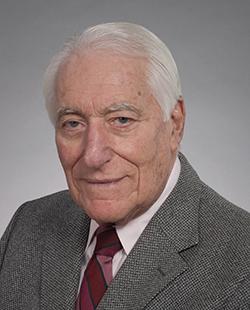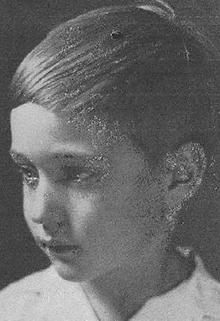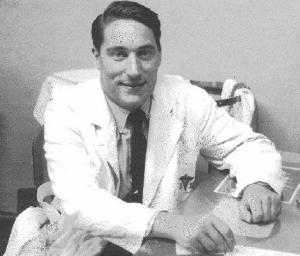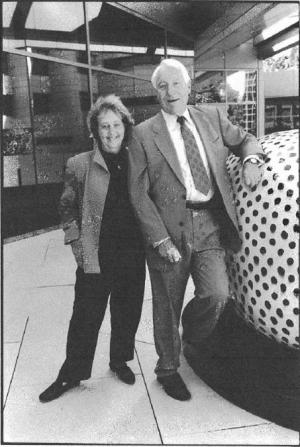
Faculty spotlight: Dr. Werner Samson

Werner Samson was just ten years old when he left his hometown of Hamburg, Germany on a children’s transport to England to escape Nazi persecution.
The following year, shortly before the start of World War II, he rejoined his parents, who had immigrated to Holland.
When his mother and sister left Holland for the United States in April, 1940, he and his father stayed behind so Samson could finish school.
Germany invaded ten days later.
Undergoing progressive loss of their liberties, father and son were deported to the notorious concentration camp of Bergen-Belsen in 1943, where Samson spent eighteen months, and lost his father to starvation.
Eventually, he was shipped east on a cattle train, and after two weeks evading advancing Allied troops, the train and its passengers were liberated by the Russian army a week before VE day.
He returned to Holland, spent nine months in London, and finally joined his mother and sister in Seattle.
A record of academic service
Samson joined the fourth class of the University of Washington School of Medicine, graduating with honors in 1953.

As a medical student, he spent a significant amount of time at Harborview Medical Center, where he met his future wife, Joan. She had graduated from the University of Washington with a bachelor’s degree in psychology in 1952, and was working at Harborview as an electroencephalograph technician.
They were married a week before he graduated from medical school.
Samson was the first student cardiology fellow under Dr. Robert Bruce, who was the first chief of cardiology at the University of Washington.
In between residencies at the University of Rochester and the University of Washington, he served two years as a Captain in the United States Air Force Medical Corps in England.
In 1958, he returned to Seattle and started his cardiology fellowship. As a fellow, he performed the first heart catheterization at the UW Hospital, which opened in 1959.
“Werner has been a key part of the School of Medicine almost from its founding,” said Dr. William Bremner, chair of the Department of Medicine.
 First appointed to the faculty at the UW in 1960 as a clinical assistant; he was promoted through the ranks to clinical professor in 1972. In the early 1960’s he was Chief of Cardiology at Harborview Hospital and started his own cardiology practice on First Hill.
First appointed to the faculty at the UW in 1960 as a clinical assistant; he was promoted through the ranks to clinical professor in 1972. In the early 1960’s he was Chief of Cardiology at Harborview Hospital and started his own cardiology practice on First Hill.
In 1970, he became a founding member of the Seattle Heart Clinic, where he practiced for 34 years before transferring his practice to the University of Washington Medical Center.
Numerous accolades have been bestowed upon him over the years – for his patient care, leadership, teaching and service – but he is perhaps best known for his work in selecting and assisting medical students.
Medical student admissions
A steadfast champion for incoming student applicants, Samson served for over 30 years as assistant dean, and then associate dean for admissions in the UW School of Medicine.
Dr. Carol Teitz, who took his place in 2007, vowed to uphold his practice of helping students who were not selected for admission.
“Dr. Werner Samson, my predecessor, did a wonderful job for a long time. He set up something that’s fairly unique, and that I will continue. He met with disappointed candidates who wanted to better their chances for another round.”
Joan and Werner Samson Endowed Scholarship

As a way to continue the tradition of helping students receive a medical education, he and his wife Joan established the Joan and Werner Samson Endowed Scholarship in 2008.
The scholarship was created to help make financial aid packages more competitive for UW School of Medicine students and to help attract the best and brightest students.
Scholarships are one way to assure that a medical education is available to a diverse population and their hope is that this scholarship will allow students interested in primary medicine or in working in underserved areas to make such choices freely, without worrying about debt.
Endowed Faculty Fellowship in Cardiology
In 2016 they established the Werner E. and Joan Samson Endowed Faculty Fellowship in Cardiology, to help recruit, retain, and provide opportunities for professional development for faculty in the Division of Cardiology.
“Werner has contributed immeasurably to the growth and success of the Division of Cardiology at UW,” said Dr. Robb MacLellan, current head of the University of Washington Division of Cardiology. “We owe him a great deal of gratitude for all his contributions.”
Reminiscences of an ancient cardiologist
Samson presented “Reminiscences of an Ancient Cardiologist” at Cardiovascular Grand Rounds in July 2015.
He talked about the history of the University of Washington Medical Center, the UW School of Medicine, and the Division of Cardiology, as well as the historical advances in cardiology throughout the years, particularly in Seattle and at the University of Washington.
In recognition of his many outstanding contributions to the academic missions of the Department of Medicine, he was appointed clinical professor emeritus in January 2016.
He continues to see patients at the Regional Heart Center.